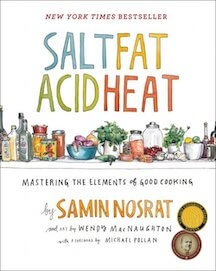What are you reading in March?

In our monthly book club, we discuss whatever we happen to be reading and ask everyone in the comments to do the same. What Are You Reading This Month?
Lovecraft Country by Matt Ruff
A quote that really stuck with me from Shudder’s recent documentary Horror Noire: A History Of Black Horror came from author and UCLA professor Tananarive Due, who says that “black history is black horror.” That statement very much translates to Lovecraft Country, Matt Ruff’s novel that’s currently being developed into a series for HBO by Jordan Peele and Underground’s Misha Green. Revolving around a family of black science-fiction and horror fans based in 1950s Chicago, Lovecraft Country draws parallels between fictional horrors and historical ones: “Sundown towns” that threatened black motorists with violence if they remained in certain places after dark translate seamlessly into the horror trope of the quaint village with a sinister secret, and the poltergeists demanding that one character “geeeet ooouuuuuut” of her haunted house might as well be the racist neighbors who want her to leave, too. Calling Ruff’s book a “novel” is a bit of a stretch; it’s more of a short story collection with overlapping characters, each of whom faces a metaphorical monster of their own, often with a Twilight Zone or EC Comics-esque moral. This is only disappointing in the sense that the initial story described in the jacket copy and in descriptions of Peele and Green’s TV adaptation wraps up sooner than anticipated—it’s a good one, full of black magic—and bodes well for its translation into episodic TV. [Katie Rife]
“Girl” by Jamaica Kincaid
It’s not often that a new music release comes with supplemental reading, but I am even more grateful to Helado Negro’s This Is How You Smile, which is already one of my favorite albums of the year, for introducing me to Jamaica Kincaid’s “Girl.” Roberto Carlos Lange, who goes by the stage name Helado Negro, was inspired to name his latest album after a line in the short story, first published in The New Yorker in 1978. That line, “This is how you smile,” is just one of many mandates packed into the single sentence that is Kincaid’s story; 681 words encompassing generations of advice and models of behavior; dozens of admonitions and housekeeping tips separated by semi-colons; a mere handful of capital letters awash in the small-case letters tasked with handing down a mother’s fears and disappointments for and about her daughter. “Girl” is a letter, a directive, a concise and powerful attempt to preserve culture and tradition. There’s no response in the story from the girl to whom it’s addressed, but Lange picks up the conversation decades later on This Is How You Smile. Tracks like “Please Won’t Please” and “Pais Nublado” don’t attempt to mold anyone’s behavior—they blend the old ways and the new ways, a native tongue and a mother tongue, while leaving room for different interpretations of culture. And now I can’t think of the album without the short story and vice versa. [Danette Chavez]
Salt, Fat, Acid, Heat: Mastering The Elements Of Good Cooking by Samin Nosrat
Samin Nosrat announced this week that she’s coming out with a new cookbook soon, called What To Cook, but I’m not done with her previous one yet. Fans of her captivating Netfix series of the same name will want to check out the original paper version of Salt, Fat, Acid, Heat. The book breaks down into those same four sections, carefully delving into the basic elements on which excellent cooking relies. “Anyone can cook anything and make it delicious,” Nosrat she says at the book’s beginning—the amazing part is, she really believes that. Sure, most of us haven’t been able to travel the word in pursuit of various avenues of flavor, but that’s what makes Nosrat’s book (and series) so valuable. She transmits all of her global culinary lessons for us. The book also features delightful illustrations by Wendy MacNaughton, which graph out concepts like Nosrat’s “Salt Flavor Spectrum,” which ranges from “cardboard” to “salt lick.” Where the book really exceeds the series, though, is the chance to immediately apply Nosrat’s lessons to your own kitchen: All four sections have recipes attached, so you can try out bittersweet chocolate with scented cream for your fat exploration and bright cabbage slaw for your acid. If you start now, you might get caught up by the time Nosrat’s next book comes out. [Gwen Ihnat]